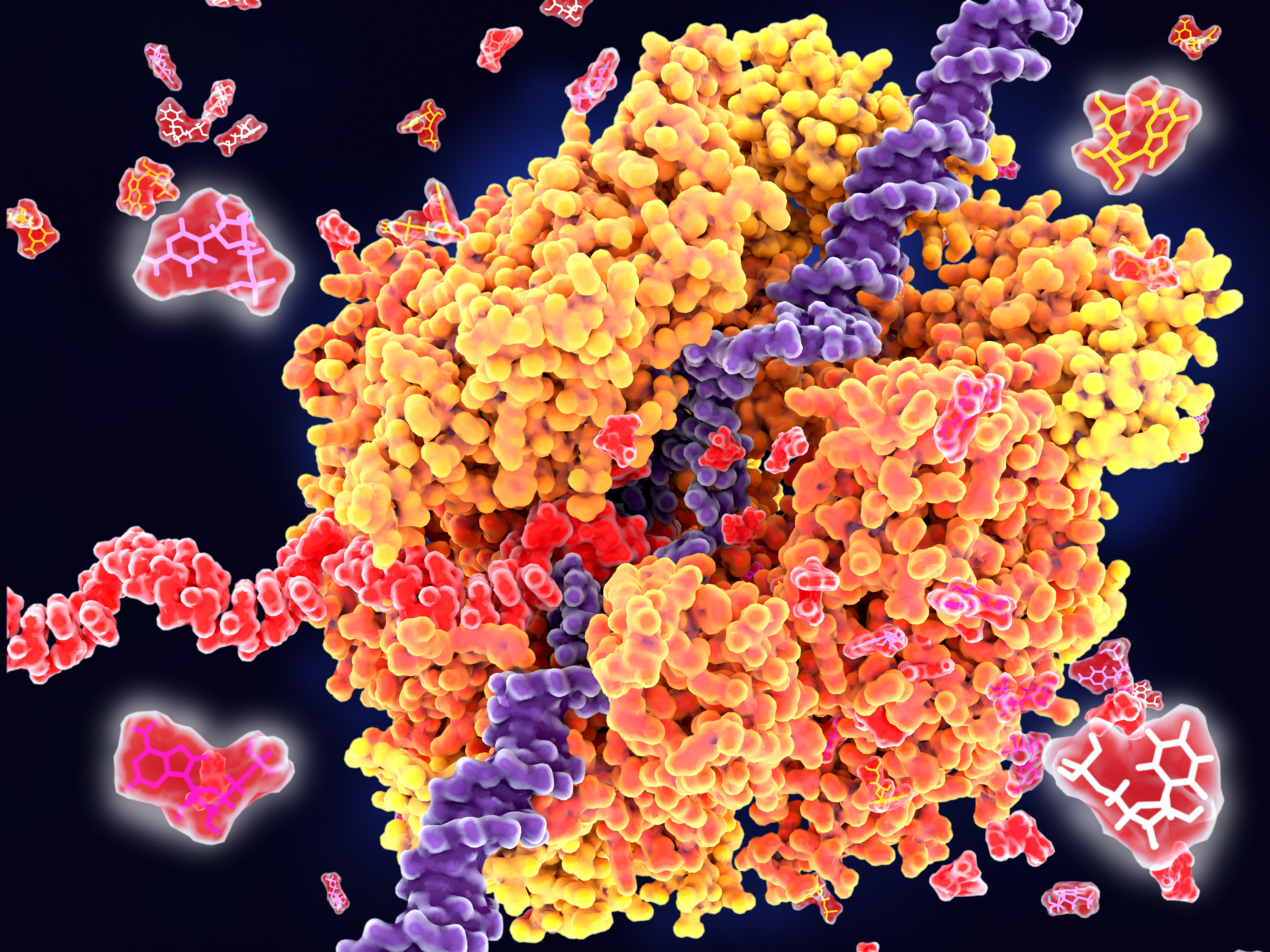Transcribed RNA can be used to study RNA structure and how it relates to function or how proteins and RNA interact. It can also be used for gene silencing using RNAi (studied more often as a possible therapeutic option) or simply serve as a molecular standard in Real-time RT-PCR. Transcribed RNA is also used in Class 2 Clustered Regularly Interspaced Short Palindromic Repeat systems, or CRISPR.
The CRISPR system, which is naturally occurring in bacteria, has been manipulated to perform gene editing in a laboratory environment. To perform CRISPR in the laboratory environment, you need two main reagents:
- The Brains: Guide RNA (gRNA or sgRNA) – Small piece of RNA containing a nucleotide sequence that is capable of binding the chosen Cas Protein, and contains a portion of the sequence that can bind the DNA the researcher intends to modify – the target DNA.
- The Brawn: CRISPR-associated endonuclease (Cas Protein) – The protein that cleaves the target DNA; the most popular Cas protein is called Cas9. The Cas protein is guided by the (gRNA).
Guo et al. used Promega’s RiboMAX™ Large-Scale RNA Production System to produce gRNA to be used in CRISPR for their study to determine the effects of the loss of, or mutations in, a specific gene in fruit flies (1). Atg101 is a gene that plays an important role in autophagy, an intracellular pathway for removing toxins or damaged parts of cells.
The RiboMAX™ Large-Scale RNA Production System is an in vitro transcription system, designed for the consistent production of large amounts of RNA in a short amount of time. The RNA produced for this study was used to create gRNA specific for the Atg101 gene but containing mutations that will be introduced into the native DNA of Drosophila embryos. The researchers then studied the effects of these mutations on the flies.
The results indicated that mutants containing exhibiting total loss of function of the Atg101 gene had reduced viability in all stages of life: embryonic, larval, pupal, and adult. Mutants that had only impaired gene function survived into adulthood but had shorter lifespans and other abnormalities, including abnormalities in gut morphology. The researchers concluded that Atg101 plays an important role in maintaining the health of neurons and gut tissues, which may then influence the aging process.
Paper Referenced
Guo, et al. (2019) The autophagy-related gene Atg101 in Drosophila regulates both neuron and midgut homeostasis. J. Biol. Chem. 294 (14), 5666–76. doi: 10.1074/jbc.RA118.006069.
Latest posts by Leah Cronan (see all)
- Mass Spec for Glycosylation Analysis of SARS-CoV-2 Proteins Implicated in Host-Cell Entry - November 10, 2020
- Proteomics from a Different Point of View: Introducing ProAlanase, the Newest Mass-Spec Grade Protease from Promega - August 7, 2020
- Go fISH! Using in situ Hybridization to Search for Expression of a SARS-CoV-2 Viral Entry Protein - July 10, 2020

